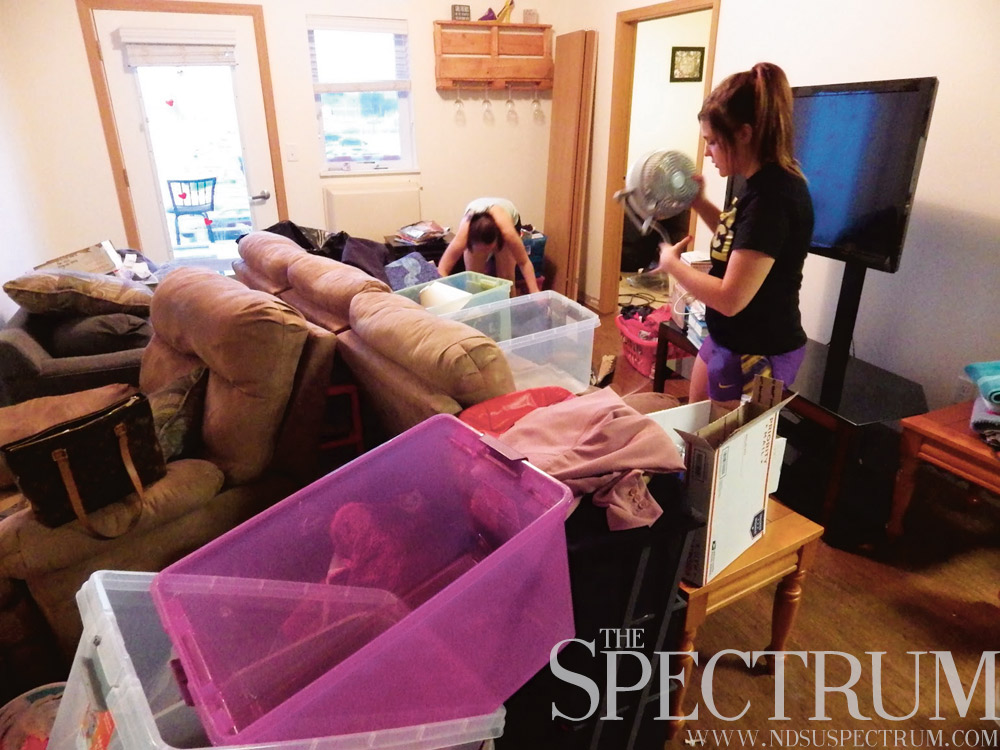
Rachel Schmaltz and Kayla Koehmstedt pack up their belongings Monday evening after flooding in the T Lofts Apartments damaged 21 units.
Floods this spring semester have made renters insurance a worthy investment for many students.
Twenty-one units on two floors of the T Lofts Apartments flooded March 5 after two suspects turned on a fire standpipe in a stairwell, activating the sprinkler system. North Dakota State’s Seim Hall also had flooding Feb. 18 when a sprinkler head broke in a fourth floor room, WDAY reported, collecting 1-3 inches of water near some electrical equipment.
Although NDSU does not require renters insurance for its residence halls, the university does recommend it. NDSU’s handbook states, “Each tenant purchases renters and liability insurance for their protection in case of an emergency or natural disaster.”
The T Lofts, meanwhile, require its residents to have renters’ insurance policies, Roers Property Management director Danielle Paulus said. Although the flooding was caused by non-residents, the cost of lost possessions ultimately falls on the residents. Affected parties must file a claim with their insurance to try and get assistance with the financial aspect of the damage.
Lane Flaten, a junior majoring in music, said he has renters’ insurance because his property manager requires it. He added he’s had renters insurance for about a year but hasn’t had to use it, but it is something worth investing in.
“Landlords are not financially responsible when there is a fire, theft or other catastrophe in their rental units,” NDSU reported in an online article. A personal renters insurance policy will help pay for the “renters’ living expenses if they have to live elsewhere while the building is being repaired,” NDSU reported.
First floor T Lofts resident Cody Sehn said he would move to the La Quinta Inn & Suites for the foreseeable future while he and his roommate will store their possessions in a trailer.
Renters insurance covers the cost of damages in case of accidents and natural disasters.
Flaten said even residence hall students should consider insurance.
“Sure,” he said, “if you’re someone who can’t be trusted around things that break.”
Jack Dura contributed to this story.
